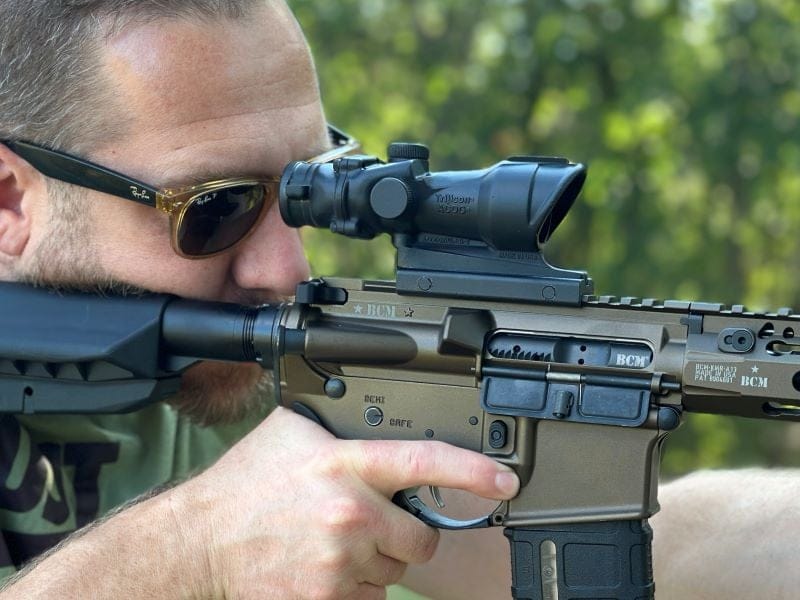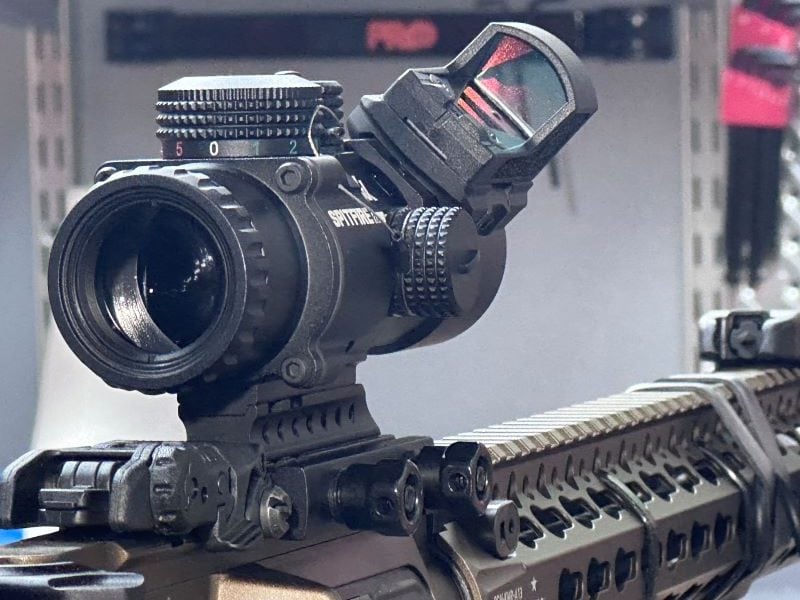With all the options we have today, settling with one type of optic is not something we should be expected to do, right? We have red dots and rifle scopes, and for medium distances, LPVOs, and prism scopes. For those who want more than one option, a red dot with a magnifier is popular. But red dots with magnifiers are more expensive and require moving the magnifier back and forth.
This has caused some people to opt for a prism scope, like the ACOG, which has etched reticles and is magnified 3x. When you’re shooting up close, a red dot performs better than a magnified optic. For further distances, magnification is desired. LPVOs are a great solution for shooters moving between short- and mid-range engagements.

When you have multiple choices in optics, and there is no consensus on which one is better, there is a reason. Each style of optic can be the “right” choice depending on what you like and how you plan to use it. I’ve been told red dot/magnifier combos are the best way to go, but I’ve also been told to avoid everything but a prism scope. Here is some helpful info to help determine which is better for you.
Red Dot/Magnifier Combos
Red dot/magnifier combos are a great option for those who want a full-size red dot with the option of magnification. The magnifier can be rotated to the side, out of the way when not being used. If you’re not familiar with flip-to-side magnifiers, they are typically magnified 3X and mounted behind the red dot. Some flip to the right, while others flip to the left.
Depending on the brand and model, some have a spring that helps them “flip” out of the way, while others do not. Some lock in both the closed and open positions. By “closed,” I’m referring to the magnifier being locked in the lower position behind the red dot, and by “open,” I’m referring to the magnifier being flipped to the side and out of the way. As I mentioned above, one downside to a combo set like this is you must purchase two separate optics.

If you like red dots for shooting up close but want the option of shooting further out, this is a good choice. Just remember to flip the magnifier back and forth as needed. Most of the time, this isn’t an issue. In a self-defense situation, it could get in the way if you have not trained with it enough.
Prism Scopes
The ACOG brought prism scopes into popularity. Prism scopes are compact optics, smaller than a scope that is magnified with etched reticles just like a traditional scope. They typically have magnification between 3x-5x. While a prism scope is magnified, they are not much larger than a red dot, making them more compact than LPVOs (low-power variable optics).
They are not the best indoors or at close distances, but you can still use them. As flip-to-side magnifiers became more popular, prism scopes started to fall by the wayside. But then micro red dots for pistols became a thing. It wasn’t long before companies started mounting micro red dots on prism scopes via Picatinny rails. Now, prism scopes are back as a solid competition to magnifiers.

Some prism scopes have illuminated reticles, but they can still be used without any power. For a rifle setup that doesn’t have to be checked on or maintained, this is a good option. If you mount a micro red dot to the optic, it will of course have a battery that would require changing from time to time.
Is one better than the other?
Some will say yes, on both sides. The truth is that both systems work great and have their benefits. Like so many other things, it comes down to two factors. What is the main purpose of your setup, and which one do you like most? If you like one over the other, go with it. I have rifles with red dots only. I also have a red dot/magnifier combo. For a multi-purpose rifle, I prefer a 3x prism scope with a micro red dot attached.

Which one will you pick?
Sometimes it’s hard to make up your mind on the rifle, the caliber, and the accessories for that rifle. Finding a list of what to buy makes it simpler, but you need to find what you like, not what others like. Stick with trustworthy brands and of course, take advice from multiple sources. But in the end, select what works best for you within your budget. Don’t think your only choice is everything or nothing at all.
There are plenty of budget-friendly optics on the market that are good quality. You may decide to go with a red dot only or add a magnifier later. If you want a prism scope with a red dot, that works great, too. Setting up your rifle should be fun and cater to your specific preferences. I prefer a prism scope over a red dot/magnifier combo, but that’s my preference. So, which one will you choose?


